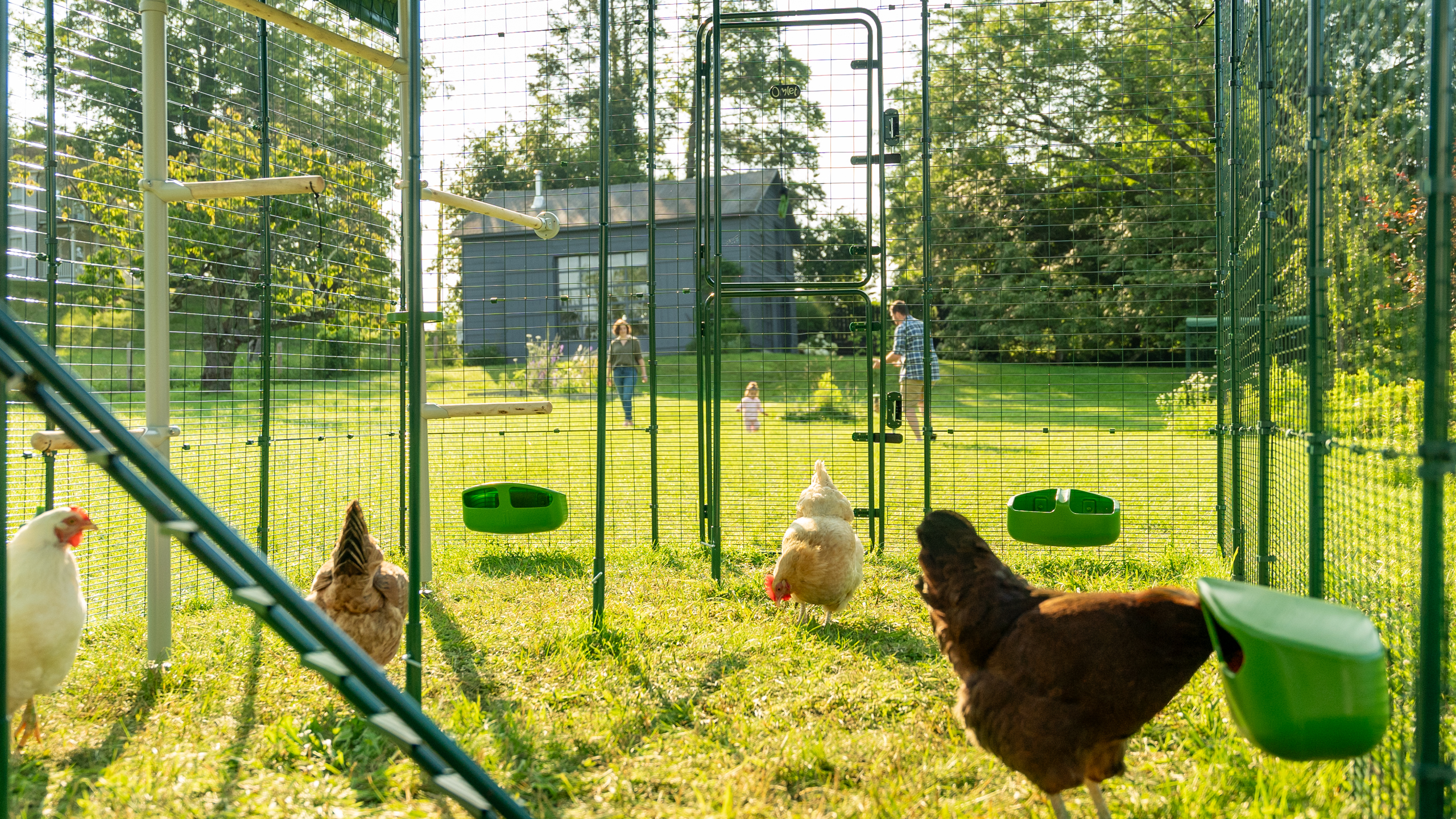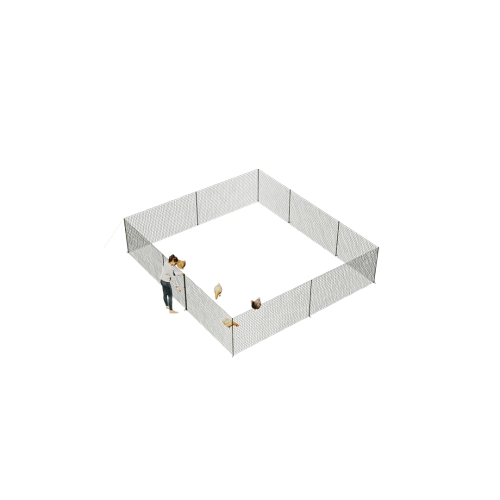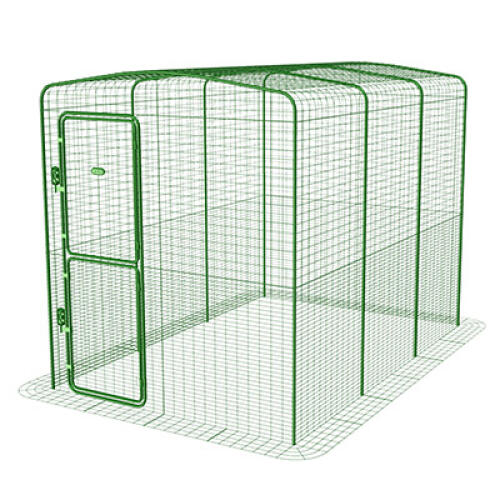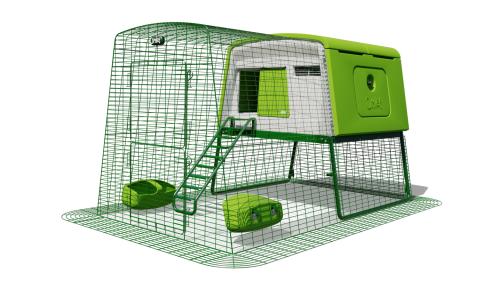p>Abdomen: The underside of the bird’s body, from keel to vent.
Bantam: Typically used in reference to miniatures of standard-sized chicken breeds, but true bantams do not have a standard-size counterpart.
Bloodspot: An egg defect, caused by the rupture of small blood vessels during ovulation. These spots are unsightly, but are perfectly safe to eat.
Bloom: Protective layer that covers an egg before it’s laid to prevent bacteria from penetrating the shell. See also: cuticle.
Broody: In reference to a hen that has a desire to sit on a clutch of eggs in order to hatch them.
Chalazae: Twisted cords of membrane that anchors the yolk to the shell of an egg.
Chicken: A male or female bird; scientific name: Gallus gallus domesticus.
Cockerel: A young male chicken
Crest: The cluster of feathers on the head of some breeds of chickens like: Polish, Sultans, and Sulmtalers.
Crop: Part of the pre-digestive system of a chicken. Food collects in the crop at the base of the neck and is softened before continuing on to the rest of the digestive system.
Crumble: Type of feed that is commonly fed to chicks, but is also available as a layer feed. Crumbles are smaller than pellets, making them a good option for young chickens.
Cushion: An area of a hen’s back, just above the tail and below the saddle.
Cuticle: Invisible layer of secretion that covers the shell of an egg just before it’s laid. The cuticle acts as a barrier to keep bacteria from penetrating the egg shell; also known as the “bloom”.
Drinker: Container for chickens to drink water from; also known as a “waterer”.
Dust bath: A designated area for chickens to lay down and cover themselves with dirt, earth, or sand with the purpose of keeping their feathers in good condition. Dust bathing is a social event that chickens will participate in together, and can help remove lice, mites, or loose feathers during a molt.
Ear lobe: The fleshy area just below the ear. It’s thought that the color of a hen’s earlobes give a clue as to what color eggs they lay. Hens with white earlobes typically lay white or light-colored eggs, and hens with red earlobes typically lay brown eggs. But, this isn’t a foolproof method – blue earlobes don’t necessarily mean blue eggs, and there are exceptions to white and red ear-lobbed chickens.
Flight feathers: The largest primary feathers on a chicken’s wing. They are the long feathers at the end of the wing, farthest from the chicken’s body.
Gizzard: The internal organ of a chicken that collects grit and grinds food to a digestible consistency.
Gullet: The esophagus of a chicken that transports food from the mouth to the stomach.
Hen: Adult female chicken over 1 year of age.
Hybrid: A chicken resulting from breeding two different breeds together.
Typically hybrids are bred for a certain characteristic, like: egg production, meat, egg color, size, or temperament.Keel: Blade-like structure of the sternum, set between the breast muscles of a bird; the breastbone of a chicken.
Mash: A wet mixture of coarse ground chicken feed or seeds; usually served warm.
Meat spots: Protein deposits found in the white area of an egg. These small pieces are usually a result of tissue breaking off of the oviduct.
Molt: The shedding of feathers in preparation for seasonal changes – usually in the fall. Molting typically lasts an average of 8 weeks, but can last up to 16 weeks.
Juvenile molts take place around 18 weeks old, and will occur annually thereafter.Nicholls, Simon: One of our 4 founding members of Omlet. Small, but perfectly formed and fluent in west country.
Paul, Johannes: One of our 4 founding members of Omlet. In pursuit of the perfect piece of cake.
Pea comb: Small comb that appears segmented into 3 portions, with the largest at the center.
Pellet: Type of commercially made feed, made up of bonded meal components.
Point of lay: Referencing pullets that are around 18 weeks of age, and ready to start laying eggs; also known as “started pullets”.
Primary feathers: The first ten feathers on the wing, starting from the tip toward the middle. These feathers are not visible while chickens are resting.
Pullet: A young female chicken under the age of 1 year old.
Purebred: A breed of chicken that is pure and conforms to breed standards.
Roost: A place for chickens to sleep overnight. As a verb: when chickens go to bed, it is said they go in to roost.
Rooster: An adult male chicken.
Rose comb: A wide, flat comb that is covered in small nodules, coming to form a tapered spike at the end.
Saddle: The lower section of a chicken’s back, accentuated by thicker feathering than the rest of the body.
Scales: The rough tissue covering the toes and legs of a chicken.
Shaft: The stem, or base, of an individual feather.
Single comb: A flat, vertical comb with serrations along the top edge. Some single combs may flop over.
Started pullets: Another term for “point of lay” hens.
Tuthill, James: One of our 4 founding members of Omlet. Has a beautiful singing voice.
Variety: Chickens of the same breed, but with different colors or feather patterns.
Vent: The orifice on a chicken that both eliminations and eggs pass through.
V-shaped comb: A split comb that forms two distinct segments that resemble horns, or the letter “v”.
Wattles: Fleshy appendages that hang under both sides of a chicken’s lower beak.
Windham, William: One of our four founding members of Omlet. Often mistaken for Brad Pitt.
Wing clipping: The practice of clipping or trimming the primary and secondary feathers of a chicken’s wing or wings to prevent the bird from flying.







Comments
Rosa, 25 August 2013
Can't wait for my chickens and Eglu Cube to arrive! Very useful information!
Sharon, 5 June 2013
WOW WHAT A MINE OF INFO,THANKYOU VERY MUCH FOR A VERY INFORMED LOOK INTO CARING FOR CHICKENS,VERY MUCH APPRECIATED FROM ME A TOTAL NOVICE .
Veronique, 20 September 2011
Great information! We've had hens for nearly a year now and they love to come in front of our glass sliding door. They will sit there in front of us, pruning their feathers and having a little nap. We have noticed that they have something on their back that protudes and they occasionally touch it with their beaks while cleaning themselves. What is it?
Carol, 7 August 2011
I am looking forward to owning and learning from my new friends when they arrive
Jane, 2 May 2011
I haven't yet managed to find a simple hen keeping book near where I live, so this guide is fantastic - not to mention adding the right amount of humour into it, I absolutely love it!